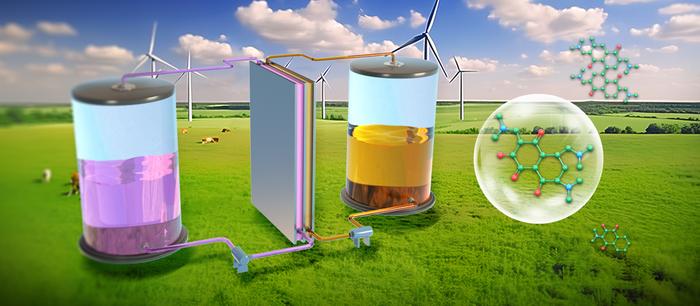Battery health is critically important, as we tend to hold on to our smartphones for several years. Battery health is also vital for other electronics and electric vehicles. Ideally, we’d want these devices to charge and discharge hundreds of times without degrading much.
We’re not quite there, but there’s plenty of research happening around the world to improve battery technology and reduce its impact on the environment.
The newest breakthrough concerns a specific type of battery that can endure hundreds of charge cycles while barely degrading. Researchers from the Dalian Institute of Chemical Physics (DlCP) of the Chinese Academy of Sciences (CAS) developed a battery type that can maintain its health at almost 100% after hundreds of cycles.
The problem with the battery tech, if we can call it that, is that it’s not meant to work inside smartphones or EVs. Instead, we’re looking at aqueous organic flow batteries (AOFBs), which can be great eco-friendly, sustainable energy storage solutions for the growing array of renewable energy sources.
These AOFBs store energy in liquids. These liquids contain organic redox-active molecules (ORAMs) that can undergo reversible redox reactions. Redox reactions are the process of gaining and losing electrons inside a battery during charge and discharge cycles.
The problem with AOFBs is that they usually need to be protected by an inert gas layer so that regular air doesn’t get in touch with the liquid. Such an event could lead to battery degradation as components in the air could interact with the liquids.

The Chinese researchers devised a method of creating these liquid batteries using new naphthalene derivatives as the ORAMs. These naphthalene compounds would not need protection from air, so the cost of producing the AOFBs would be reduced.
Using the naphthalene derivatives in the liquid batteries, the researchers created a battery that could offer stable cycling performance for 850 cycles, or about 40 days. These naphthalene derivatives were stable in the air and served as the catholyte of the AOFBs. The AOFB ran “smoothly” for 600 cycles, or about 22 days, without capacity and efficiency decay, even when exposed to continuous airflow.
The researchers expanded the system, creating “pilot-scale battery stacks” based on naphthalene derivatives technology. The system reached a capacity of about 330 Ah and retained 99.95% capacity after 270 cycles (27 days).
The results are impressive, and the researchers think they might lead to innovations in eco-friendly battery solutions needed to store energy from renewable energy sources. “This study is expected to open a new field in the design of air-stable molecular for sustainable and air-stable electrochemical energy storage,” Prof. Li said in a statement.
The technology is described in a study published in Nature Sustainability.








